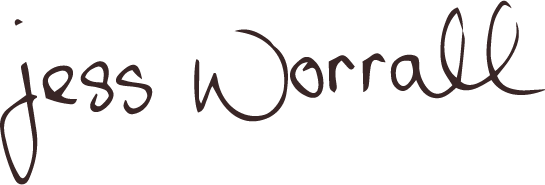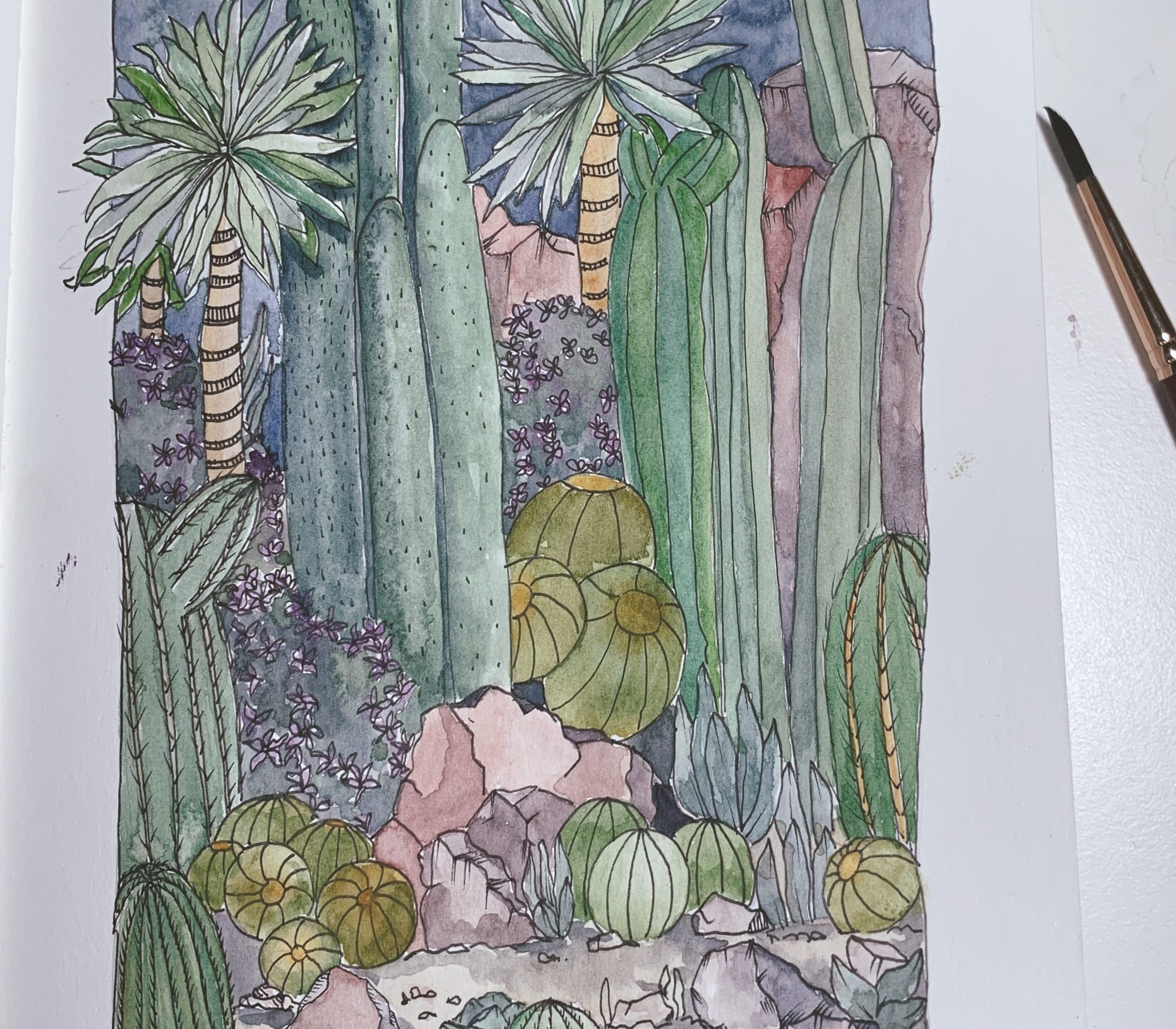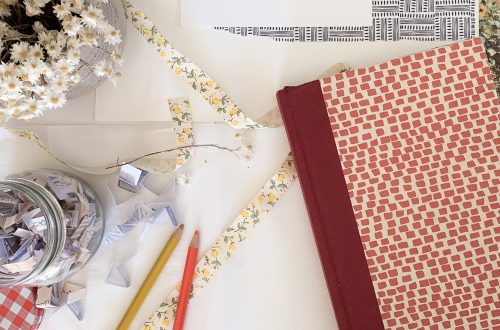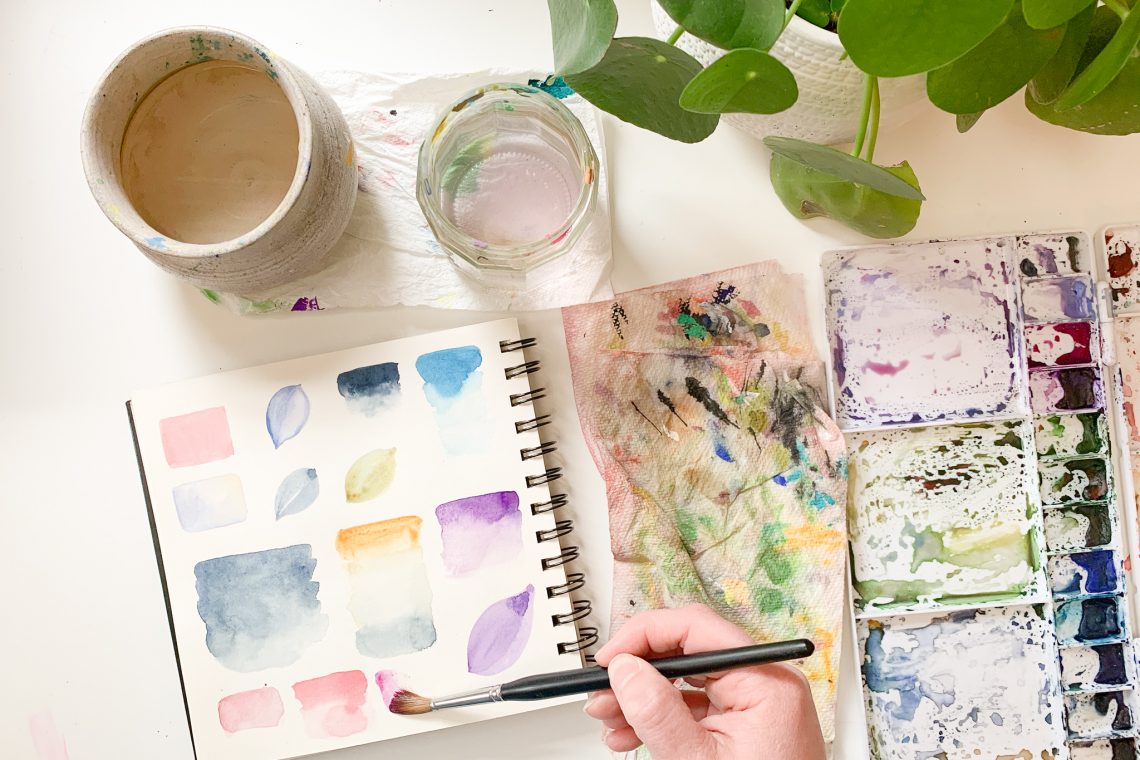
Improve your watercolour with these 3 simple steps
Have you ever struggled with your watercolour practice not looking quite right, something off about it. Well here I have 3 simple steps that you can follow that will instantly improve your art.
- Paper quality and weight matter
If you are wanting to improve your watercolour painting and up your game then the paper really does make a difference. The way watercolour reacts with the page and how much water the paper can handle will determine the overall look and quality of your work. For watercolour the best paper to be using is 100% cotton paper ideally at 300gsm/140lb but you could probably get away with 200gsm/120lb. The heavier the paper the more water it can absorb and the less you paper will buckle, especially if you are not stretching your paper first.
When choosing your paper you also want to look out for hot press or cold press paper. Hot press has a smooth surface with no texture, where cold press has a varied degree of texture from soft to rough. This really comes down to personal preference and what style or look you are going for. My advice would be to try them out and see what works best for your style and the overall look you are trying to achieve with your watercolour painting.
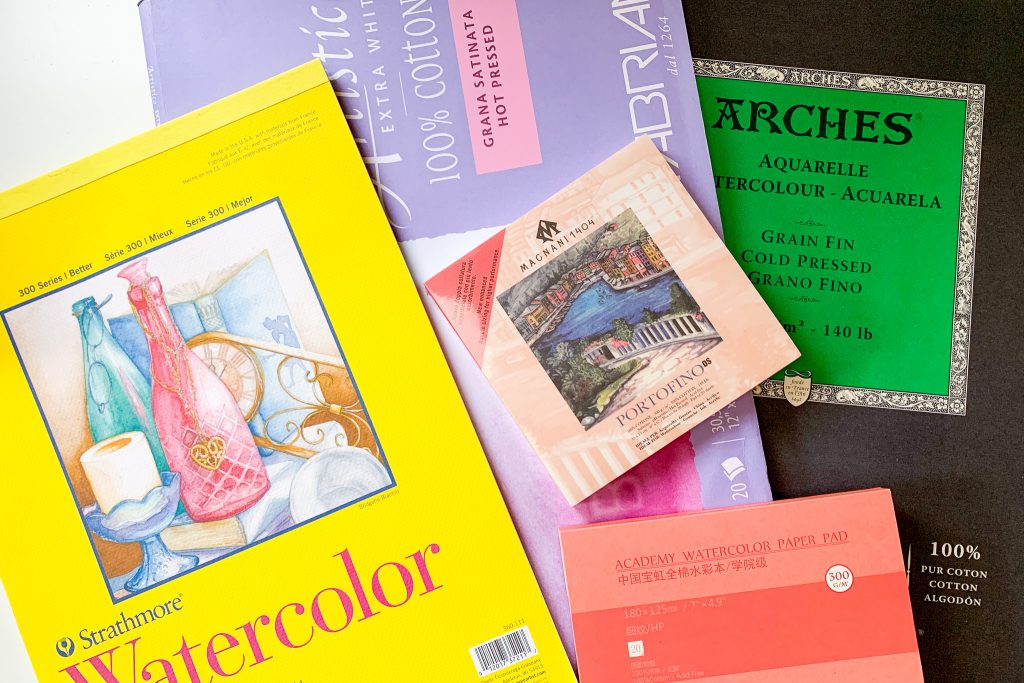
- Pigment and water ratio matters.
This is crucial to improving your watercolour and getting the most out of your paints. And avoiding those hard marks when your painting dries. This took me a long time to work out and then one day it finally clicked, and it instantly boosted my confidence. I was always extremely careful about the amount of pigment that I used with water, I never wanted to waste those expensive products; but hey let me tell you a secret they are meant to be used and played with and explored. So don’t be shy away from loading that pigment you want to be using your paints and tools to their full potential.
When working out your pigment and water ratio what you want to avoid is loading your brush with too much water. When collecting water with your brush you can either scrape it along the edge of your water cup or dab it lightly on a paper towel. You want to avoid puddles on your page. However to fix this you can use a dry brush to lift up any excess water, dab with a paper towel.
Tip: always have paper towels on hand when using watercolour it will make your life easier and it is a tool I have with me at every painting session.
All these things will get easier with practice and as you learn your tools, which leads me to my next point.
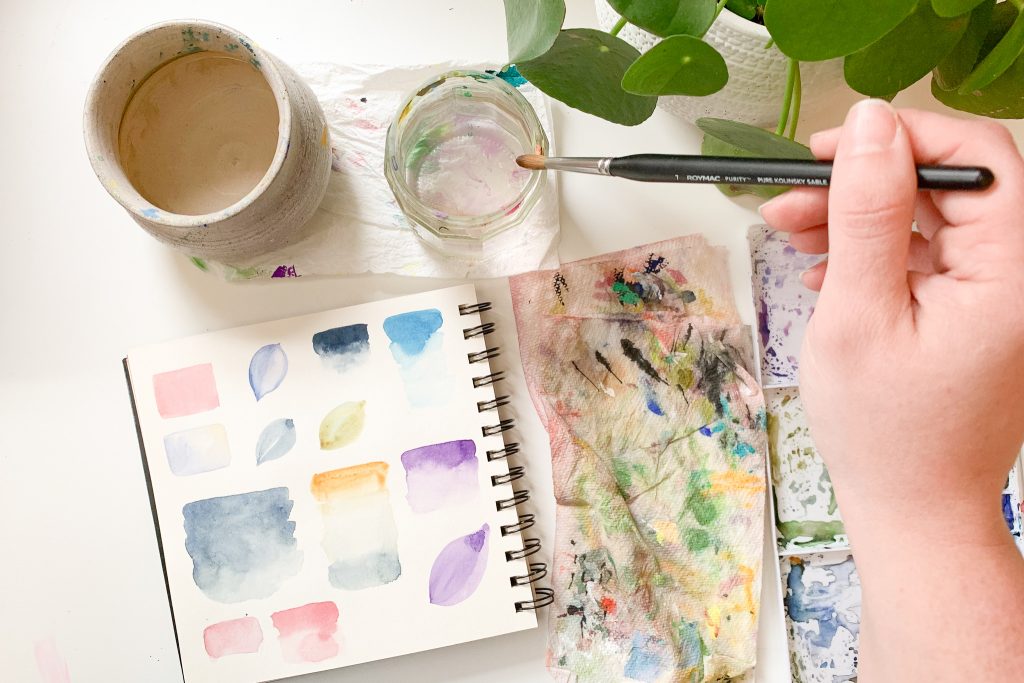
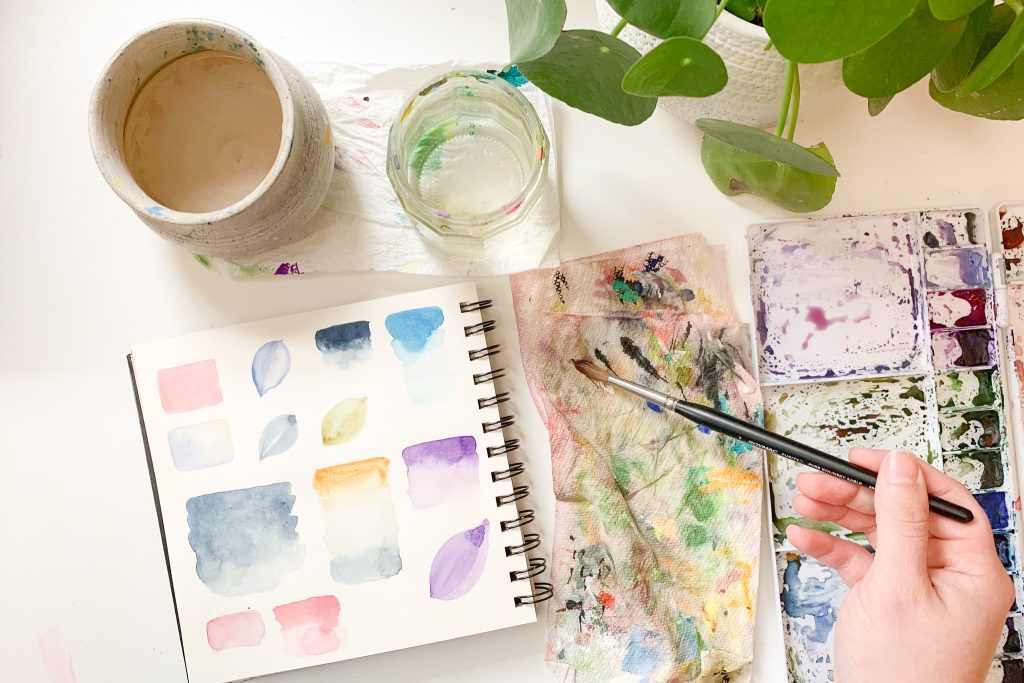

- Practice and embrace the mistakes.
The best way to learn how your tools work is to practice with them, play with them and explore their properties. See what works and what doesn’t learn from the mistakes you do make.
Get comfortable making mistakes, and making art that is not always good. Get out of that perfectionist mindset (we all struggle with) and embrace those mistakes because that is where you learn the most. You will learn what works, what you like and what you don’t, different processes and that will all contribute to developing your own unique and signature style.

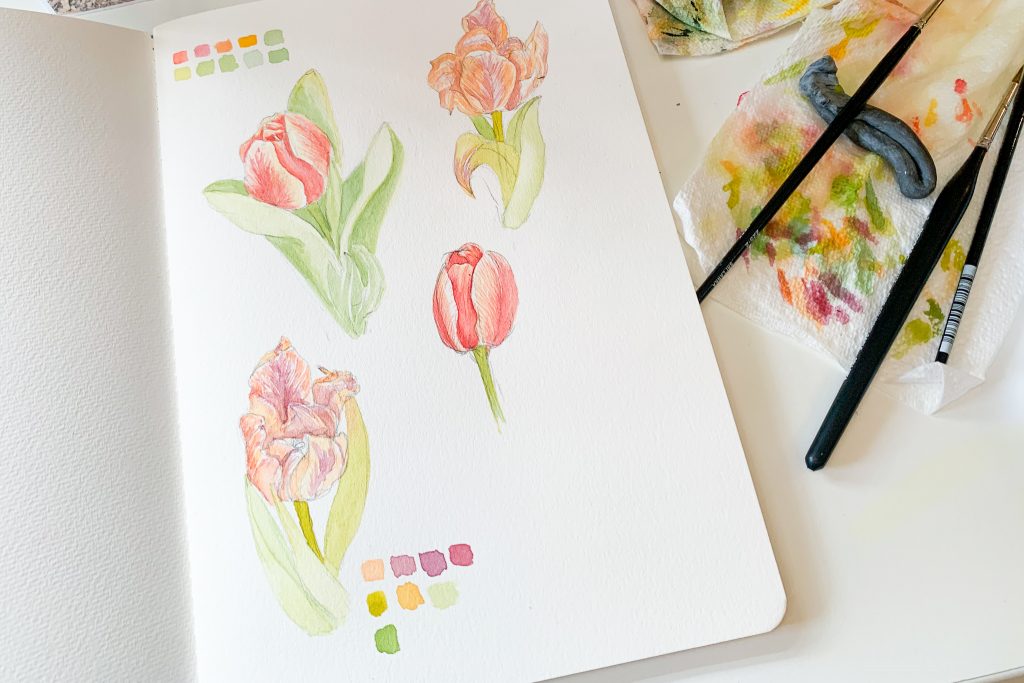
If you ever get stuck with finding inspiration or you feel overwhelmed and unsure where to start there are so many different resources and teachers teaching online. Platforms like Skillshare and Domestika, don’t underestimate YouTube. There are many artists on this platform sharing their knowledge with the world. You can find me here sharing my process and techniques for how I create my art.
I hope these steps were useful to you. If you have any further questions or would like to know more about a particular subject just leave me a comment below.

